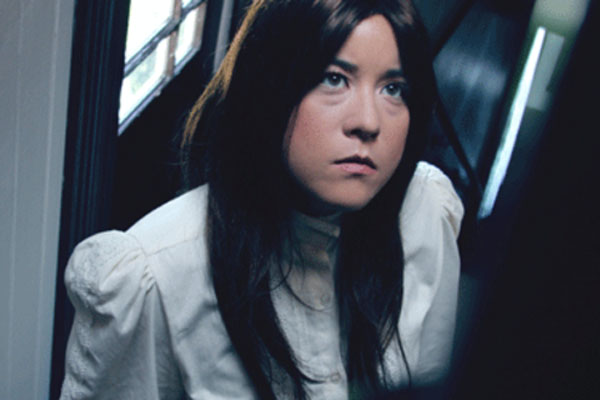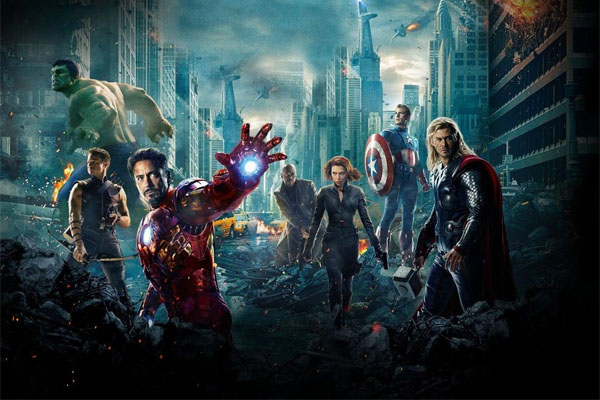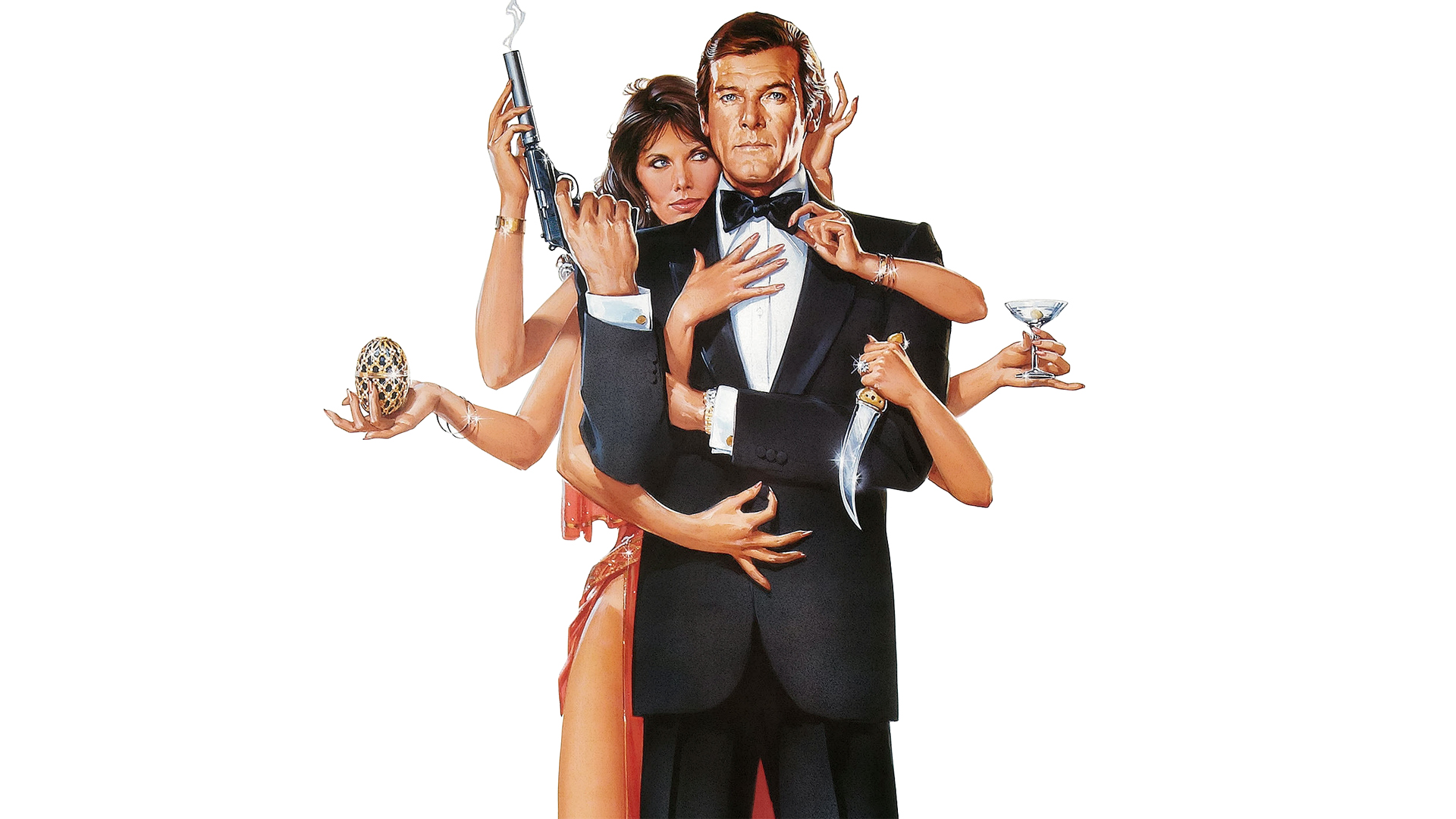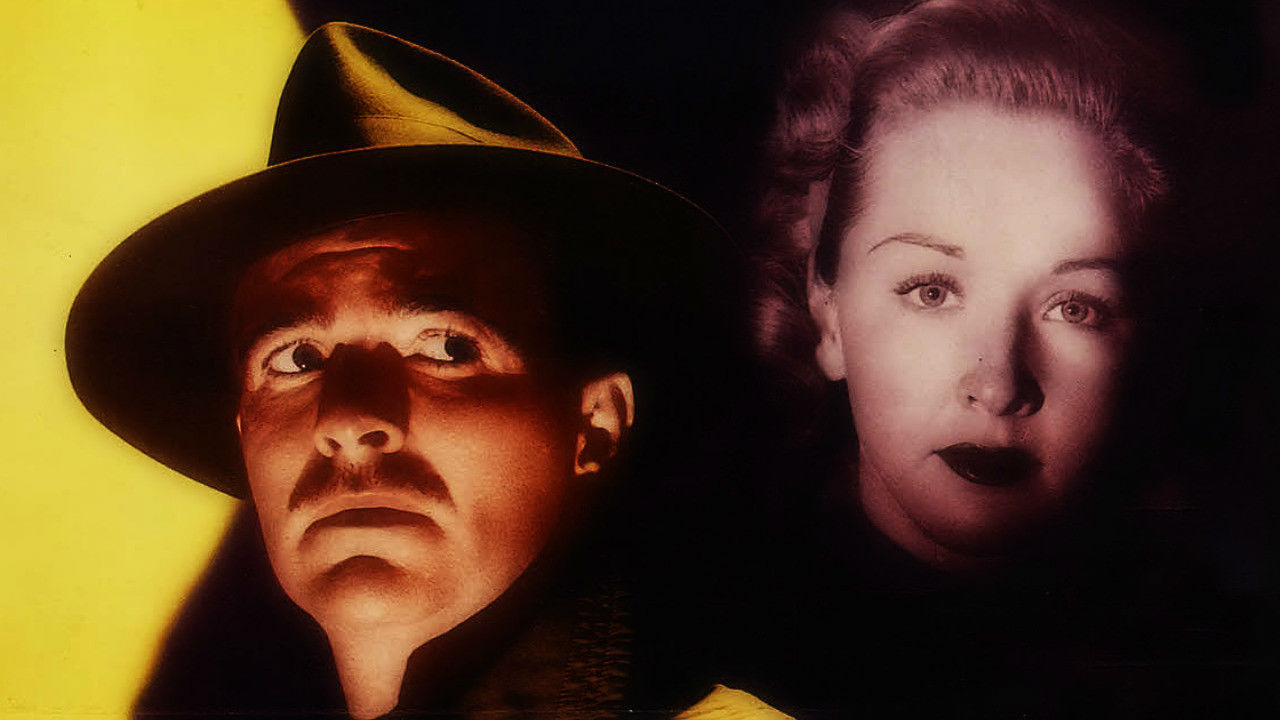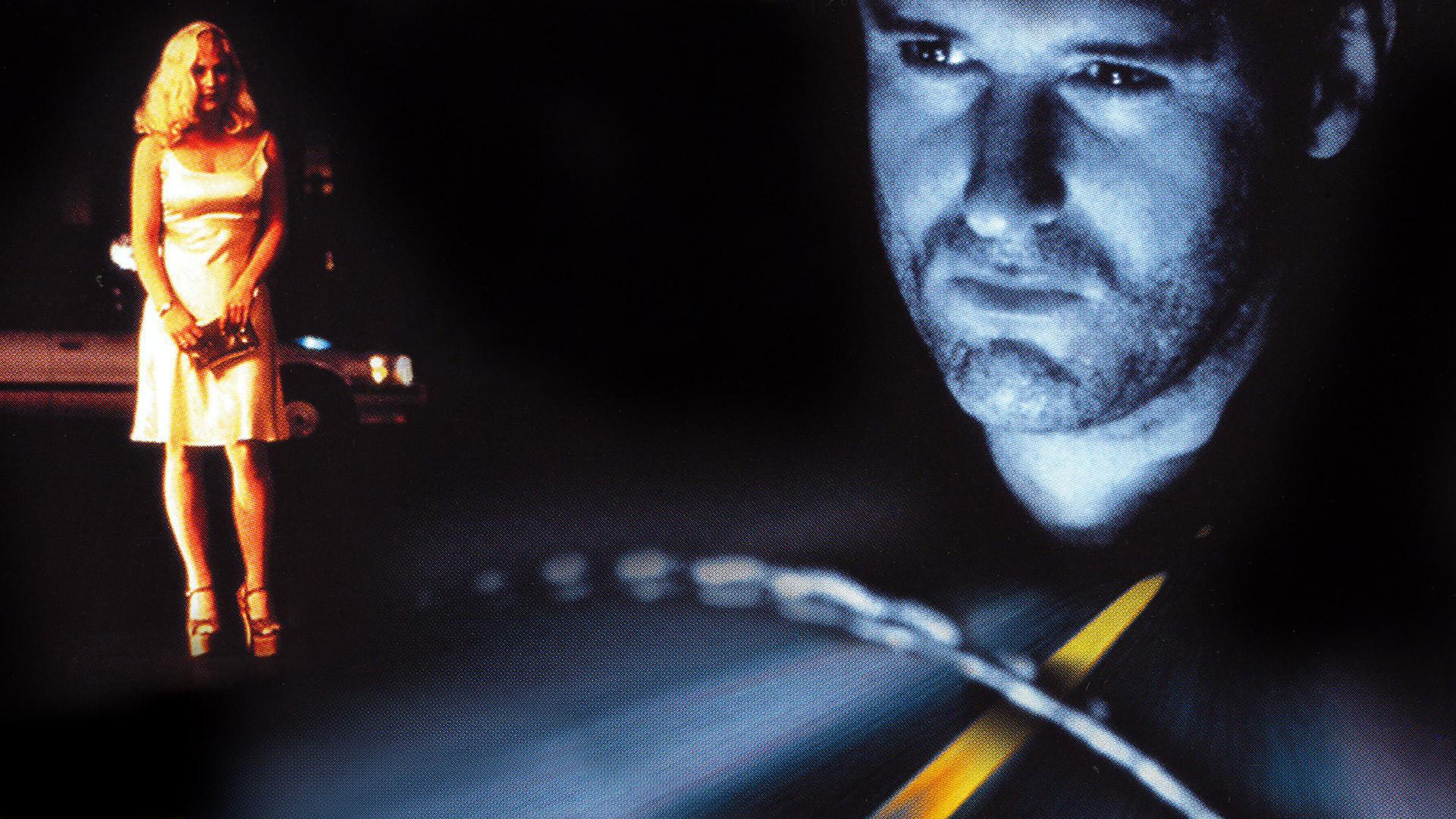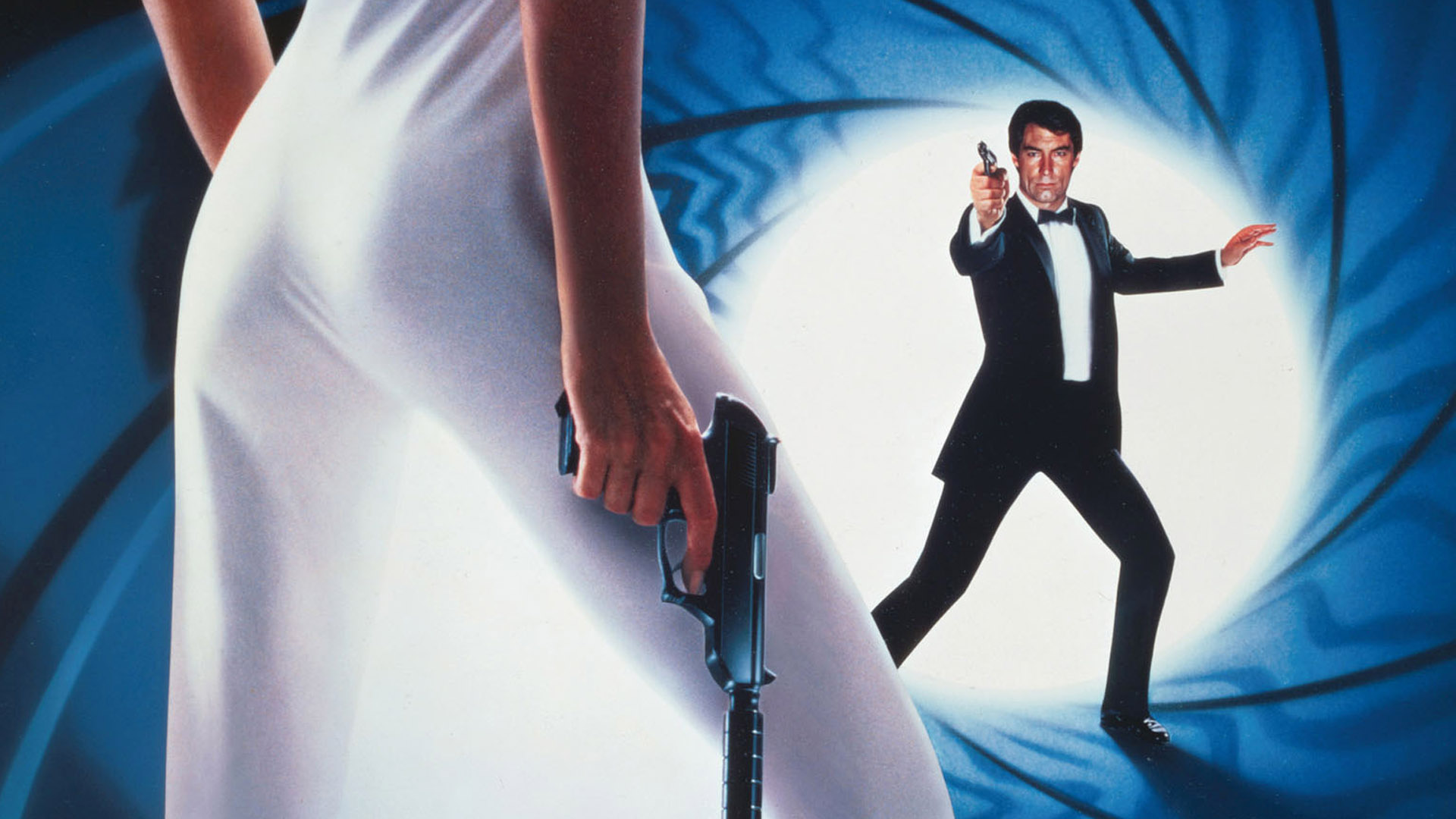“I Am a Ghost” (2012, Dir. H.P. Mendoza):
According to H.P. Mendoza, it all started with a second viewing of The Sixth Sense, and the twinge of disappointment he felt at the experience — after all, he already knew Bruce Willis was a ghost, and with that knowledge, what did the film have but a trump card that had been played? Why not construct a ghost story in which the ghost is known to the audience from the opening frame? A movie with the definitive title of I Am a Ghost, natch?
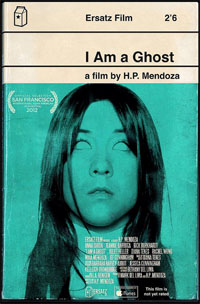 Those who know Mendoza from Colma and Fruitfly, two musicals that have come to represent a certain Bay Area indie film aesthetic (low budget, shaky acting, and an irrepressible joie de vivre in filmmaking) might be in for a bit of shock when they witness the initial scenes of I Am a Ghost, wherein Emily (Anna Ishida) awakens inside a plush Victorian house, cooks some morning eggs, rummages around an old chest of drawers, and prepares to go to market — and repeats these actions again, and again, and again. Scenes without dialogue? Icy camera movements? Whither the motormouth characters that populate Mendoza’s musicals and the witty tableaus he constructs for his big production numbers?
Those who know Mendoza from Colma and Fruitfly, two musicals that have come to represent a certain Bay Area indie film aesthetic (low budget, shaky acting, and an irrepressible joie de vivre in filmmaking) might be in for a bit of shock when they witness the initial scenes of I Am a Ghost, wherein Emily (Anna Ishida) awakens inside a plush Victorian house, cooks some morning eggs, rummages around an old chest of drawers, and prepares to go to market — and repeats these actions again, and again, and again. Scenes without dialogue? Icy camera movements? Whither the motormouth characters that populate Mendoza’s musicals and the witty tableaus he constructs for his big production numbers?
The quick answer: Mendoza (who directed, shot, scored and wrote the film) has found a new genre sandbox to play around in, and sure enough, I Am a Ghost pays tribute in subtle and not-so-subtle ways to the hallmarks of the genre — rumbling sound design and shock close-ups from latter-day David Lynch, turn-of-the-century costuming that recalls Peter Weir’s Picnic at Hanging Rock (a film Mendoza states he is fond of), shots of corridors and almost inhumanly calm faces that conjures up the ghosts of Kubrick’s The Shining and the last act of 2001 (Emily even comes face-to-face with herself at one point). The story is essentially a one-and-a-half-hander, as Emily is accosted by the disembodied voice of Sylvia (Jeannie Barroga), a medium in the present day attempting to convince Emily of her ghosthood and help her find peace. What this entails is Emily breaking out of the cycle of routine that has plagued her (and the audience) from the film’s beginning, gain “self-awareness” (as much as a ghost can) and get to the root of her issues, which may or may not involve a demon in the attic and a submerged personality in her psyche (yes, even ghosts have psyches, it seems).
For a film that attempts to get in its scares the good old-fashioned way, that’s a whole lot of gimmickry to plow through (ironic given Mendoza’s feelings about The Sixth Sense) and by the sixth time that morning routine is repeated you may cast a longing glance at the exit signs. It doesn’t help that the script gets over-explanatory when it has a chance to be more elliptical and evocative (it also didn’t help that I watched the film with a Psychology student friend who promptly punctured the psycho-babble). Even though the film’s structure ultimately doesn’t make logical sense, there’s a pleasing Moebius-strip quality to it, and once the narrative finally gets going it supplies some good zingers, including the climactic appearance of Emily’s demon (Rick Burkhardt), which effectively takes its cue from Japanese New Wave horror. While it may have been shot on the cheap with a DSLR camera, Mendoza wrings out some nifty effects, especially when Emily opens the door of her house to find herself perched on cavernous darkness in all directions.
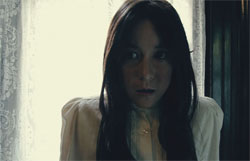 Does this mash-up add up to something more than its stitched-together Frankenstein beast of parts? Not really. Mendoza is to be credited for getting out of his comfort zone, but his particular weaknesses as a filmmaker are accentuated by the horror film context; we can forgive and even enjoy sloppiness and aimlessness when it comes to musicals, as long as the production numbers pop and spirits remain high, but all the gestures towards other horror films in I Am a Ghost remain just that — gestures that lack a sense of a whole (what does Emily’s Victorian dress and the faded family photos have to do with her story apart from a half-hearted attempt to generate the atmosphere of Turn of the Screw? Nothing, it seems). One tic Mendoza hasn’t rid himself of is his predilection for inconclusive conclusions, and the non-resolution of this tale might leave you more nonplussed than chilled. What’s better, a ghost story without a twist, or a ghost story without a pat ending? I Am a Ghost tries to be both, and doesn’t quite succeed at either.
Does this mash-up add up to something more than its stitched-together Frankenstein beast of parts? Not really. Mendoza is to be credited for getting out of his comfort zone, but his particular weaknesses as a filmmaker are accentuated by the horror film context; we can forgive and even enjoy sloppiness and aimlessness when it comes to musicals, as long as the production numbers pop and spirits remain high, but all the gestures towards other horror films in I Am a Ghost remain just that — gestures that lack a sense of a whole (what does Emily’s Victorian dress and the faded family photos have to do with her story apart from a half-hearted attempt to generate the atmosphere of Turn of the Screw? Nothing, it seems). One tic Mendoza hasn’t rid himself of is his predilection for inconclusive conclusions, and the non-resolution of this tale might leave you more nonplussed than chilled. What’s better, a ghost story without a twist, or a ghost story without a pat ending? I Am a Ghost tries to be both, and doesn’t quite succeed at either.
